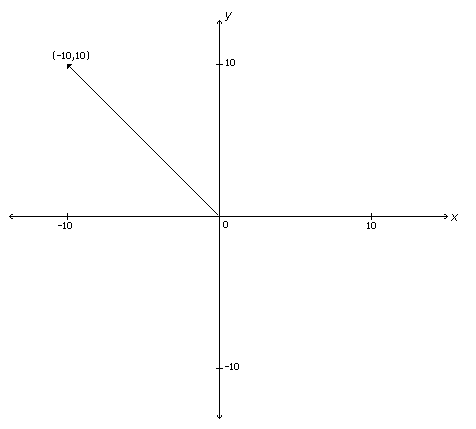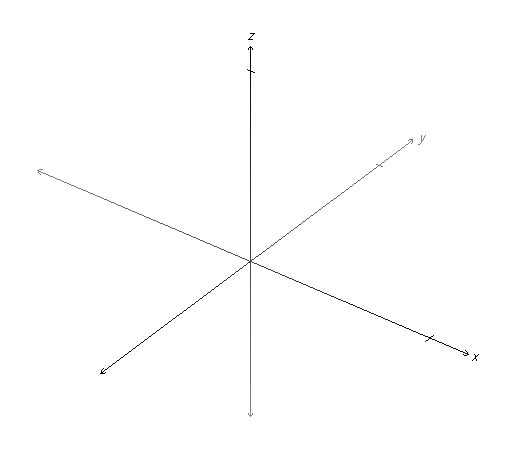
Advanced mathematics in plain English
You are here: Mathematics → Vectors → The Cartesian Coordinate System
The Cartesian Coordinate System
Now, you know that one dimensional numbers can be represented as points on a number line, and can be oriented either to the left (negative), or to the right (positive) of the origin (the zero point). But vectors are not limited to one dimension. How could you represent, for example, a two dimensional number that is situated 4 units right of the origin and 10 units above the origin?Well, you can just specify its coordinates. There are actually several different coordinate systems to choose from, with Cartesian coordinates being the easiest and most popular.
2-dimensional Cartesian coordinates
Cartesian coordinates are just the natural extension of the number line into two (or three) dimensions. In the two dimensional case, we just use two number lines (or "axes"), called the x axis and y axis, at right angles to each other.
Note that the x axis runs along an imaginary y = 0 line, and likewise x = 0 along the y axis.
The 2 dimensional space in which 2-vectors (that's just shorthand for "2 dimensional vectors," like our (-10, 10) vector above) exist, is called a plane, that's plane as in "flat surface," not plane as in "airplane." In the case of cartesian coordinates, it's called the Cartesian Plane, named after the famous mathematician Descartes. It's also known as the for x-y plane obvious reasons.
Note that just like the 1 dimensional number line, even though I've only labeled the axes up to 10 units on either side, the Cartesian plane actually runs an infinite distance in each direction; as indicated by the arrow-heads on the ends of the axes.
3-dimensional Cartesian coordinates
Describing vectors in three dimensional space (or 3-space for short), is as simple as adding a third coordinate axis, called the z axis, at right angles to the other two. Although it isn't possible to draw true 3-D images on a 2-D computer screen, you can still use your imagination:
Note that in 3-dimensional Cartesian coordinates, there is still an x-y plane present, it's just that it's now possible for a vector to move off the x-y plane, simply by having a z component other than zero.
Home

This work by http://plainenglish.info is licensed under a Creative Commons Attribution 4.0 International License.
You may copy this work, however you must always attribute this work if you do so.

This work by http://plainenglish.info is licensed under a Creative Commons Attribution 4.0 International License.
You may copy this work, however you must always attribute this work if you do so.